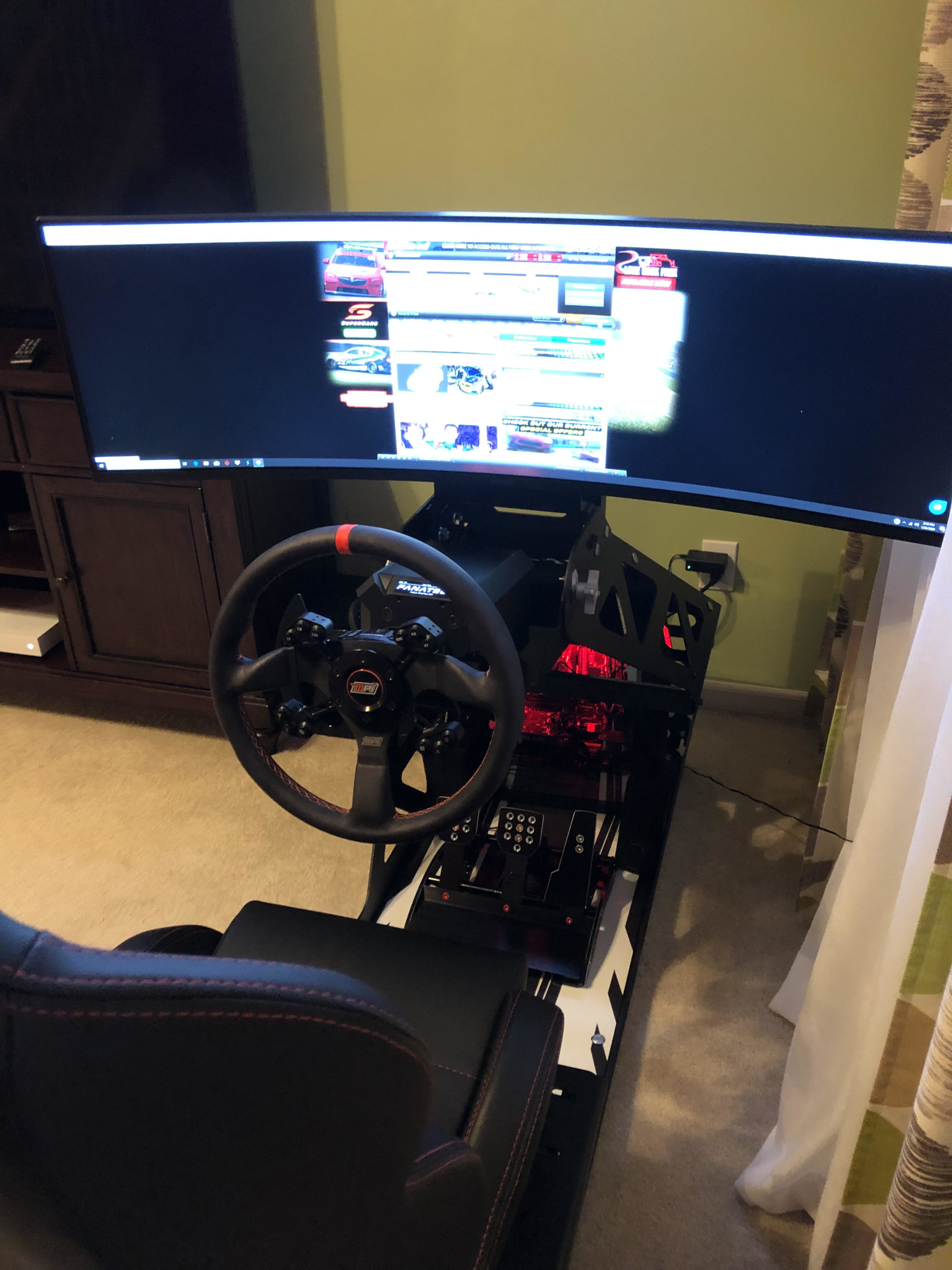With so much of the world in lockdown due to the COVID-19 pandemic, live sporting events have gone by the wayside — and motor sports are no exception. In fact, car races were among the first events to be canceled, but in an effort to keep their seasons running and sponsors on board, pro racers are now taking to platforms like iRacing, an online simulation, to compete.
To get an idea of the types of racing systems the pros are using, we talked to Shawn Langdon, a National Hot Rod Association (NHRA) Top Fuel world champion, along with the company that built his setup, WR1 Sim Chassis. Langdon has been spending his time in lockdown competing in IndyCar series races using a turnkey racing setup, which includes everything needed to race out of the box.
Here’s a quick look at his setup, and the platform he uses to race.
Start your (virtual) engines
For the uninitiated, iRacing is an online racing simulator that allows head-to-head competition over the internet. The various racing events are run by everyone from amateur bedroom racers to professional drivers with sponsors and real-life experience. It covers nearly every type of motor sport, including NASCAR, IndyCar, World of Outlaws Sprint Cars, and Australian Supercars.
Racers can participate using only a gaming console and a controller, but iRacing’s simulator uses real-world physics, so granular control over vehicle movements will yield a much better racing result. As such, many pro racers opt for purpose-built racing rigs to get a competitive edge.
Langdon stresses that equipment is just one small part of the equation though. “You can spend as much as you want, but it won’t help you win,” he says, arguing that even with the best setup, virtual racing still requires a high degree of skill. “An expensive rig won’t save a bad driver, but a good driver can win with anything.”
Under the hood
Langdon’s rig was built by an Oklahoma company run by Chad Wheeler, a racer and fabricator who says he fell into building sim racing rigs almost by accident after building one for his own use. His systems are turnkey, which means that there’s very little in the way of assembly and setup to do before getting behind the wheel. These sort of contained racing systems combine a large curved monitor with a racing seat, a steering and pedal setup, and a powerful gaming PC. Here’s a rundown of the components:
The frame

Wheeler’s business started out as a metal fabrication company, so building aluminum frames for sim racing setups wasn’t much of a stretch. He’s been doing it for years. Buyers can order custom colors and can even have sponsors’ names laser-etched into the metal.
The computer
Wheeler says that the PCs they use in their racing setups vary sometimes based on availability of components, but the one in Langdon’s unit is an HP Omen. The desktop has an Intel Core i7, 16GB of RAM, and an NVIDIA GeForce GTX 1660 Ti graphics card. Outside of the actual car inputs (steering/brakes), the system uses a 2.4GHz mini wireless keyboard with a touchpad. Langdon uses a Logitech G533 gaming headset for most of his races, but the company does make built-in sound systems for its clients.
The monitor

Langdon’s setup uses a curved 49-inch Samsung monitor with a 32:9 aspect ratio. The QLED panel has a 3840 x1 080 resolution and 144hz refresh rate to keep the picture sharp and bring the race to life, and the screen’s curvature helps drivers get a view that more closely mimics what they’d see if they were actually in a car. It’s all up to personal preference, though. Some racers use a multi-monitor setup, where the main screen handles front-of-car duty, while two other monitors on either side display action on the vehicle’s sides.
The steering wheel and pedals
The pedals and steering system for Langdon’s rig were built by a peripherals company called Fanatec. The pedals have a high level of adjustability in their angle and position to allow for the greatest degree of accuracy and control. The brake pedal can even be adjusted to various levels of stiffness to simulate realistic braking pressure. Langdon’s pedals are bolted into the metal frame, but they can be used as freestanding units as well.
The Fanatec ClubSport Wheel Base V2.5 is a dual belt-driven steering system that provides strong force feedback and smooth action. It uses a brushless servo motor, which improves the system’s reaction times and smoothness. “The steering wheel feedback makes the driving a lot more realistic,” Langdon says.
It’s notable that this is just the steering base, which means that the steering wheel has to be added separately, but the cool thing is that the system can quick-change steering wheels just like in a real race car.
The seat
The racing seat in Langon’s setup is from renowned gaming seat manufacturer MPI, and bolts right into the metal frame. It’s heavily bolstered like a real racing seat and has pockets on the side to store other devices. The company also makes a size for taller and larger drivers.
How to watch
If you want to see Langdon and other pros in action, you can check out one of the many high-profile iRacing events that take place each weekend. Races from eNASCAR, Formula 1, and IndyCar (where Langdon races) are scheduled regularly, and the calendars can be found on the respective racing organizations’ websites.



